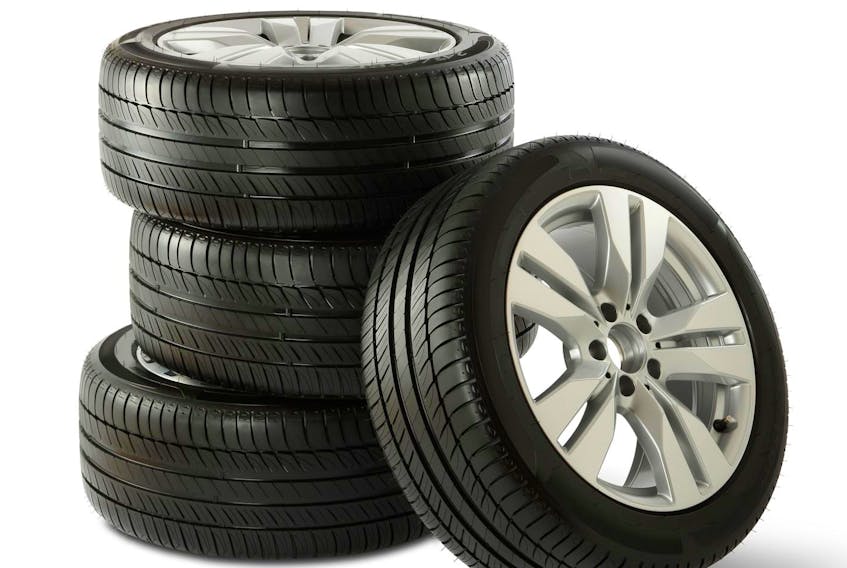With the growing call for better fuel efficiency, automakers and tire manufacturers have been making strides toward reduced fuel use.
Increasingly, tires are being used as a weapon in that fuel-saving battle.
If you’re in the market for a new set of all-season, performance, winter or even off-road tires, you’ll encounter a variety of options that market a blend of fuel-saving provisions with other features designed to help the tire last longer, be more recyclable, and keep more fuel in your tank.
But how does a fuel-saving tire work?
By making special design and composition tweaks to the tire, manufacturers can incrementally reduce that tire’s rolling resistance — the energy needed to make it turn.
Not to be confused with traction or grip, rolling resistance is one of the biggest fuel-economy factors when it comes to tires.
Reduce the rolling resistance of the tire, and the vehicle’s engine doesn’t have to work as hard to keep things turning. Less fuel is burned and fewer emissions are generated as a result.
Often, engineers specify a harder, stiffer rubber compound which lasts longer, wears out more slowly and reduces rolling resistance (and fuel use), since harder tires have less rolling resistance than softer ones.
But as many tire-savvy folks know, harder tires also offer less grip —posing a conundrum where grip and traction face off against longevity and lowered rolling resistance.
The solution, which bridges the gap, often involves using silica to enhance the harder rubber compound. Added to this harder rubber, silica dials up traction and grip, but without actually increasing rolling resistance.
Fuel-saving tires, at their simplest, often use a harder, silica-enhanced rubber compound that offers longer wear and reduced rolling resistance, along with the same grip and traction as a softer tire. The result is fuel savings, longer tire life, and no compromise in traction. It’s a win-win.
Bill Gray is a tire expert at OK Tire in Halifax.
“Some other common measures used by manufactures in fuel saving tires include less tread depth ... by reducing new tread depth, the tread is more rigid, which allows tires to maintain more tread-to-road contact and reduced heat buildup, allowing the tire to roll more easily,” said Gray.
The shallower treads enhance fuel efficiency, while the harder, longer-wearing rubber enables superior tire life at the same time.
“Another method is to make the sidewall stiffer, helping keep the tread contact with the road more stable, while reducing heat and increasing mileage.” Gray said.
From this basis of a stiffer, harder tire, engineers can re-optimize the tire’s tread pattern, as well as its overall construction, to further reduce rolling resistance.
The tread design is often modified to capitalize on the benefits imparted by the silica-reinforced rubber, and the tire’s overall construction can be tweaked to save weight through redesigned inner structures and reinforcement provisions, often with an eye for making the tire lighter, and more durable.
“Along with the silica, there are other synthetic rubbers being mixed with the natural rubber to keep the tires from wearing too fast,” said Gray.
By some accounts, a long-lasting, fuel-saving tire can provide a return on investment, provided owners take proper steps to maintain the tires via inflation checks, regular rotation, and maintenance of a good alignment, each of which extends the life of the tire.
“Fuel-saving tires require the same amount of maintenance as any other conventional tire ... air pressure should be checked every month and the car should be kept properly aligned and tire rotations should be carried out according to manufacturer specifications,” said Gray.
In one example, experts at Pirelli say their Scorpion Verde fuel-saving tires offer up a 20 per cent reduction to rolling resistance and an eight per cent reduction in tire weight, all enabled by switching to a silica-based rubber compound and re-optimizing the rest of the tire around it. All of that with no reduction (and in some cases, an improvement) to performance.
Other fuel-saving provisions used by some tire manufacturers include advanced materials in the inner structure, which work to better reinforce the tire while reducing weight, and other rubber compound additives and design tweaks that help the tire to stay cooler (and therefore, harder and more fuel efficient), more consistently.
Today, these fuel-saving provisions have been extended to specialty tires for off-road vehicles, performance tires, winter tires, and more.
“Fuel saving tires are more popular with customers with Hybrid cars,” says Gray. “Right now, we don’t have many mainstream customers asking for these tires, though as tire manufactures offer more education and advertising, I believe we will be seeing more and more clients asking about fuel saving tires.”
All said, you’ll have no shortage of options when it comes to fuel saving tires, virtually no matter what you drive. Many of these are also manufactured using environmentally-friendly practices and less harmful chemicals and additives, providing a full spectrum of ecological responsibility that many of today’s shoppers value.









